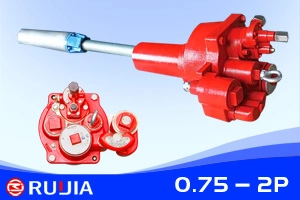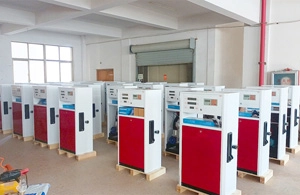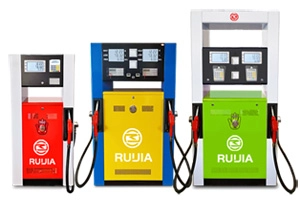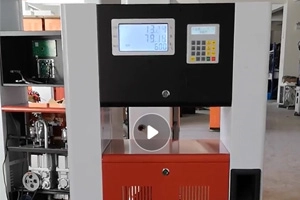- 20+ Years Of History
- 30+ Countries
- 50000 Yearly Production
Fuel Transfer Pumps: The Backbone of Fluid Handling Systems
In the vast landscape of industrial machinery and transportation systems, fuel transfer pumps play a pivotal role in ensuring the seamless movement of liquids from one location to another. These devices, often overlooked in favor of more glamorous components, are indispensable in industries ranging from automotive and aviation to agriculture and emergency services. This article explores the mechanics, applications, types, and safety considerations of fuel transfer pumps, shedding light on their critical importance in modern operations.
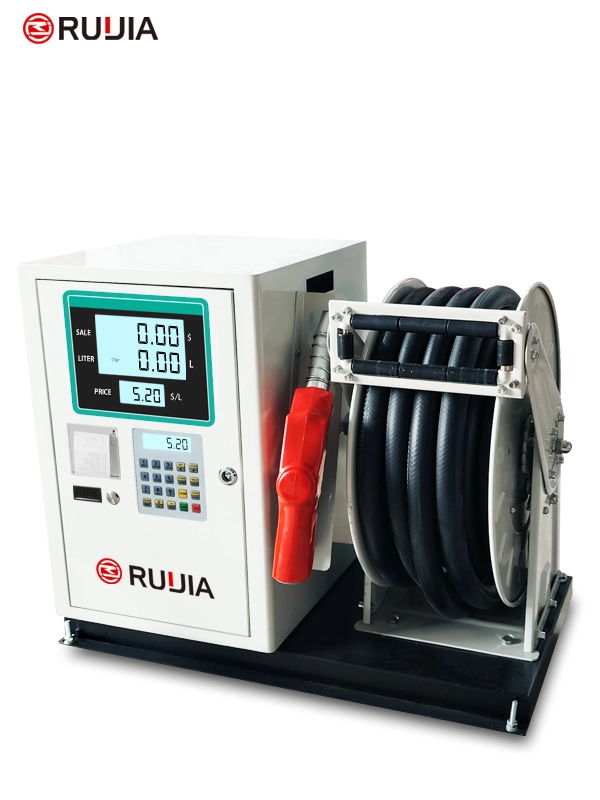
What is a Fuel Transfer Pump?
A fuel transfer pump is a mechanical device designed to move liquid fuels—such as gasoline, diesel, kerosene, or aviation fuel—from storage tanks, drums, or reservoirs to vehicles, machinery, or secondary containers. These pumps create pressure differentials to overcome gravitational or frictional resistance, enabling efficient fluid transfer. Unlike standard pumps, fuel transfer pumps are specifically engineered to handle flammable liquids safely, adhering to strict industry standards.
How Do Fuel Transfer Pumps Work?
Fuel transfer pumps operate on principles of displacement or centrifugal force:
Positive Displacement Pumps:
These pumps trap a fixed volume of fluid and force it into the discharge pipe. Common subtypes include:- Gear Pumps: Use interlocking gears to push fluid.
- Diaphragm Pumps: Utilize a flexible diaphragm to create suction and discharge cycles.
- Rotary Vane Pumps: Employ rotating vanes to move fluid.
Centrifugal Pumps:
These rely on a rotating impeller to accelerate fluid outward, converting kinetic energy into pressure. They are ideal for high-flow, low-pressure applications.
Modern pumps often incorporate electric or pneumatic motors, though manual hand pumps remain in use for low-volume or emergency scenarios.
Types of Fuel Transfer Pumps
Fuel transfer pumps are categorized based on power source, portability, and application:
Manual Pumps:
- Operated by hand cranking or lever action.
- Ideal for small-scale transfers or backup use.
- Low cost but labor-intensive.
Electric Pumps:
- Powered by AC/DC motors.
- Common in automotive fuel stations and industrial settings.
- Offer precise flow control and automation.
Pneumatic Pumps:
- Use compressed air for operation.
- Explosion-proof, making them suitable for hazardous environments.
Submersible Pumps:
- Designed to operate while submerged in fuel.
- Minimize vapor emissions and leakage risks.
Drum Pumps:
- Portable pumps mounted on barrels or drums.
- Widely used in workshops and small-scale operations.
Key Applications
Fuel transfer pumps serve diverse industries:
Automotive:
- Refueling vehicles at gas stations.
- Transferring fuel from storage tanks to generators or construction equipment.
Aviation:
- Delivering jet fuel to aircraft via specialized high-flow pumps.
Marine:
- Refueling ships and boats at docks.
- Bilge pumping and fuel management on vessels.
Agriculture:
- Distributing diesel to tractors and harvesters.
- Irrigation system fuel supply.
Emergency Services:
- Rapid deployment of fuel during disaster relief operations.
- Firefighting equipment refueling.
Safety Considerations
Handling flammable liquids demands rigorous safety protocols:
Explosion-Proof Design:
Pumps used in hazardous environments must comply with ATEX or NEC standards to prevent ignition.Grounding:
Static electricity buildup must be neutralized to avoid sparks.Leak Prevention:
Seals, hoses, and connections should be inspected regularly for wear.Ventilation:
Adequate airflow prevents vapor accumulation in confined spaces.Material Compatibility:
Pump components must resist corrosion from fuel types (e.g., ethanol-blended gasoline).
Maintenance Best Practices
To ensure longevity and reliability:
Regular Inspections:
Check for leaks, worn seals, and damaged hoses.Filter Replacement:
Clogged filters reduce efficiency and strain motors.Lubrication:
Follow manufacturer guidelines for bearing and gear maintenance.Winterization:
Drain pumps in freezing conditions to prevent fuel gelling or component damage.Documentation:
Keep logs of maintenance activities and pump performance.
Innovations in Fuel Transfer Technology
Advancements are reshaping the industry:
Smart Pumps:
IoT-enabled pumps monitor flow rates, detect leaks, and provide real-time diagnostics via mobile apps.Energy Efficiency:
Variable frequency drives (VFDs) optimize motor speed, reducing power consumption.Eco-Friendly Designs:
Vapor recovery systems minimize emissions during fuel dispensing.Lightweight Materials:
Composite materials enhance portability without sacrificing durability.
Choosing the Right Pump
Selecting a fuel transfer pump requires evaluating:
- Flow Rate: Measured in gallons per minute (GPM).
- Viscosity: Thicker fuels like diesel may require positive displacement pumps.
- Portability: Mobile vs. fixed installations.
- Environment: Hazardous certifications for explosive atmospheres.
- Budget: Balancing upfront costs with long-term maintenance.
Conclusion
Fuel transfer pumps may not command the spotlight, but their role in keeping industries operational is undeniable. From powering cross-country trucking fleets to enabling emergency response efforts, these devices ensure that energy reaches where it’s needed most. As technology evolves, smarter and greener pumps will continue to drive efficiency and safety in fluid handling systems. Whether you’re managing a fleet or refueling a generator, understanding the mechanics and best practices of fuel transfer pumps is key to optimizing performance and mitigating risks.
Fuel Transfer Pumps: The Unsung Heroes of Fluid Management
In industries ranging from automotive to aerospace, fuel transfer pumps play a pivotal role in ensuring the safe and efficient movement of liquids. These devices, though often overlooked, are critical components in systems that rely on precise fluid handling. This article explores the fundamentals of fuel transfer pumps, their types, applications, and best practices for maintenance.
1. What is a Fuel Transfer Pump?
A fuel transfer pump is a mechanical or electrically powered device designed to move liquid fuels—such as gasoline, diesel, kerosene, or aviation fuel—from one container or system to another. Unlike standard pumps, they are engineered to handle flammable or hazardous liquids safely, prioritizing leak-proof operation, corrosion resistance, and precise flow control. Their primary functions include:
- Transferring fuel between storage tanks, vehicles, or machinery.
- Maintaining pressure in fuel injection systems.
- Facilitating refueling operations in industrial settings.
2. How Do Fuel Transfer Pumps Work?
Fuel transfer pumps operate by creating a pressure differential that forces liquid through a system. Most designs incorporate the following stages:
- Intake: A suction mechanism draws fuel into the pump.
- Pressurization: Rotational or reciprocating motion increases the fuel’s pressure.
- Discharge: Pressurized fuel is directed toward the destination via hoses or pipes.
Key performance metrics include flow rate (gallons per minute), pressure capacity (PSI), and viscosity tolerance, which determine compatibility with specific fuels. Advanced models may integrate sensors for real-time monitoring of temperature, pressure, and flow anomalies.
3. Types of Fuel Transfer Pumps
A. Centrifugal Pumps
Using an impeller to generate kinetic energy, centrifugal pumps excel in high-flow, low-pressure scenarios. They’re ideal for transferring large volumes of low-viscosity fuels but struggle with thick fluids like heavy diesel.
- Pros: Energy-efficient, low maintenance.
- Cons: Limited suction power, prone to cavitation.
B. Positive Displacement Pumps
These pumps trap fixed amounts of fuel and force it into the discharge pipe. Subtypes include:
- Gear Pumps: Intermeshing gears propel fuel; suitable for medium-viscosity liquids.
- Diaphragm Pumps: A flexible diaphragm creates pressure, ideal for hazardous environments due to zero leakage risk.
- Piston Pumps: Reciprocating pistons handle high-pressure tasks, commonly used in aviation.
Pros: Consistent flow regardless of pressure, handles viscous fuels.
Cons: Higher complexity, potential for wear in moving parts.
C. Rotary Vane Pumps
Vanes slide in and out of a rotor, creating chambers that move fuel. These pumps strike a balance between centrifugal and positive displacement designs.
- Pros: Quiet operation, handles moderate viscosities.
- Cons: Sensitive to particulate contamination.
4. Applications Across Industries
Fuel transfer pumps are indispensable in diverse sectors:
- Automotive: Electric fuel pumps in vehicles maintain injection system pressure, while portable pumps aid in emergency refueling.
- Aviation: High-pressure pumps ensure precise fuel delivery to aircraft engines, often operating under extreme temperature conditions.
- Marine: Corrosion-resistant pumps transfer fuels between ship tanks and manage bilge systems.
- Agriculture: Diesel-powered pumps refuel tractors and irrigation equipment in remote areas.
- Emergency Services: Explosion-proof pumps are deployed during fuel spill containment or disaster relief operations.
5. Selecting the Right Pump: Key Considerations
Choosing an appropriate fuel transfer pump requires evaluating:
- Fuel Type: Viscosity, flammability, and chemical compatibility.
- Flow Requirements: Match the pump’s GPM rating to operational demands.
- Power Source: Electric (AC/DC), hydraulic, or engine-driven options.
- Environmental Factors: Temperature range, explosion-proof certifications (e.g., ATEX), and ingress protection (IP) ratings.
- Regulatory Compliance: Adherence to standards like API 610 or ISO 13709.
6. Maintenance and Safety Protocols
Proper upkeep extends pump lifespan and prevents catastrophic failures:
- Routine Inspections: Check seals, gaskets, and hoses for wear or leaks.
- Filter Replacement: Clogged filters reduce efficiency; replace per manufacturer guidelines.
- Lubrication: Grease bearings and gears in mechanical pumps to minimize friction.
- Winterization: Drain residual fuel in cold climates to avoid freezing damage.
Safety remains paramount when handling flammable liquids:
- Ground pumps to prevent static-induced ignition.
- Use intrinsically safe equipment in explosive atmospheres.
- Install pressure relief valves to mitigate overpressurization risks.
7. Innovations Shaping the Future
Advancements in pump technology focus on sustainability and smart features:
- Variable Frequency Drives (VFDs): Adjust motor speed to optimize energy use.
- IoT Integration: Sensors enable predictive maintenance by tracking vibration, temperature, and efficiency trends.
- Biofuel Compatibility: Redesigned materials resist corrosion from ethanol-blended fuels.
- Solar-Powered Pumps: Off-grid solutions for remote fueling stations.
8. Conclusion
From powering cross-country truck fleets to enabling precision in jet engines, fuel transfer pumps are the backbone of modern fluid logistics. Understanding their mechanics, applications, and maintenance needs ensures reliable performance while reducing environmental and safety risks. As industries evolve toward greener practices, these pumps will continue to adapt, underscoring their enduring relevance in an energy-driven world.
Fuel transfer pumps are critical components in various industries, ensuring the efficient and safe movement of fuels from storage tanks to end-use applications. Whether in aviation, automotive, marine, or industrial sectors, these pumps play a pivotal role in maintaining operational continuity and safety. This article explores the functionality, types, applications, and importance of fuel transfer pumps in modern fuel management systems.
Understanding Fuel Transfer Pumps
A fuel transfer pump is a mechanical device designed to move liquid fuels—such as gasoline, diesel, kerosene, or jet fuel—from one location to another. Unlike standard pumps, fuel transfer pumps are specifically engineered to handle the unique properties of fuels, including their flammability, viscosity, and potential for corrosion. These pumps must operate reliably under varying conditions, ensuring minimal leakage, optimal flow rates, and compliance with safety standards.The primary function of a fuel transfer pump is to create a pressure differential that facilitates the movement of fuel through pipelines or hoses. This can be achieved through different mechanisms, such as centrifugal force, positive displacement, or vacuum suction, depending on the pump’s design and application.
Key Components and Working Principles
Most fuel transfer pumps consist of a motor, impeller (in centrifugal models), or a set of gears/lobes (in positive displacement models), along with valves and seals to control flow and prevent leaks. The working principle varies by type:
- Centrifugal Pumps: These use a spinning impeller to generate centrifugal force, pushing fuel outward and creating a vacuum to draw more fuel into the system. They are ideal for high-flow, low-pressure applications.
- Positive Displacement Pumps: These pumps move fuel by trapping a fixed volume and forcing it through the system. Examples include gear pumps, vane pumps, and diaphragm pumps. They are preferred for high-pressure scenarios and viscous fuels.
- Submersible Pumps: Designed to operate underwater, these pumps are commonly used in fuel storage tanks to transfer liquid from the bottom to the surface.
Safety features such as explosion-proof motors, anti-static materials, and leak detection systems are often integrated to mitigate risks associated with fuel handling.
Applications Across Industries
Fuel transfer pumps are indispensable in numerous sectors:
- Aviation: In airports, these pumps transfer jet fuel from underground storage tanks to aircraft refueling trucks. They must meet stringent safety and precision requirements to prevent contamination or spills.
- Marine Industry: Ships and offshore platforms rely on fuel transfer pumps to move diesel or bunker fuel between tanks, ensuring uninterrupted operations.
- Automotive: During fuel delivery to gas stations, transfer pumps move large volumes of gasoline or diesel from bulk storage to dispensers.
- Industrial Sector: Factories and power plants use these pumps to supply fuel to generators, boilers, and machinery, often in hazardous environments.
- Emergency Response: Firefighters and disaster relief teams utilize portable fuel transfer pumps to refuel vehicles or equipment in remote or damaged areas.
Types of Fuel Transfer Pumps
The choice of pump depends on the specific requirements of the application:
- Electric Pumps: Powered by electricity, these are common in stationary systems and offer precise control.
- Pneumatic Pumps: Operated by compressed air, they are safer in explosive environments.
- Manual Pumps: Used for small-scale or emergency transfers, though less efficient for large volumes.
- High-Pressure Pumps: Designed for applications requiring rapid fuel delivery, such as racing or heavy machinery.
Importance of Maintenance and Safety
Regular maintenance is crucial to ensure the longevity and reliability of fuel transfer pumps. Key practices include:
- Inspection for Wear and Tear: Checking seals, impellers, and valves for damage.
- Lubrication: Ensuring moving parts are properly lubricated to reduce friction.
- Cleaning: Removing debris or contaminants that could clog the system.
- Testing for Leaks: Using sensors or visual checks to identify and address issues promptly.
Safety protocols, such as grounding to prevent static sparks and using non-sparking materials, are essential to prevent fires or explosions. Compliance with regulations like OSHA (Occupational Safety and Health Administration) or ISO standards further ensures safe operations.
Future Trends and Innovations
Advancements in technology are shaping the future of fuel transfer pumps. For instance, the integration of IoT (Internet of Things) sensors allows real-time monitoring of pump performance, detecting anomalies before failures occur. Additionally, the rise of electric vehicles and alternative fuels is driving the development of pumps tailored for biofuels, hydrogen, or other sustainable energy sources. Energy-efficient designs and eco-friendly materials are also becoming priorities to reduce environmental impact.
Conclusion
Fuel transfer pumps are unsung heroes of modern infrastructure, enabling the seamless movement of fuels that power our world. Their design, functionality, and reliability are critical to industries that depend on uninterrupted energy supply. As technology evolves, these pumps will continue to adapt, ensuring safety, efficiency, and sustainability in fuel management. Whether in a bustling airport, a remote oil rig, or a local gas station, fuel transfer pumps remain vital to the global energy ecosystem.
